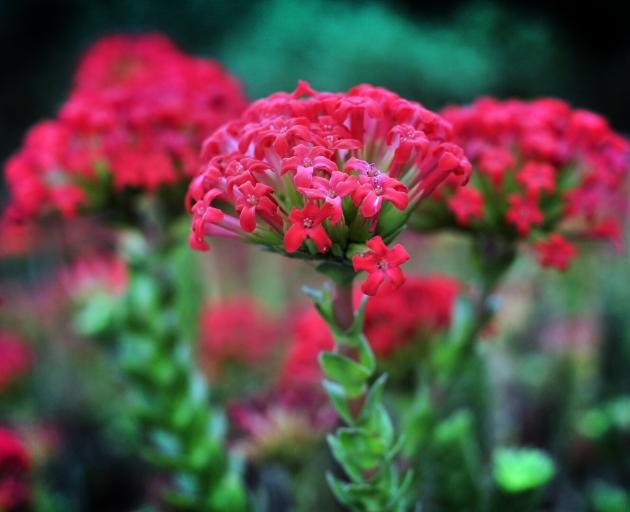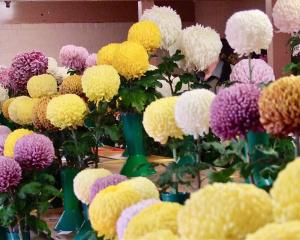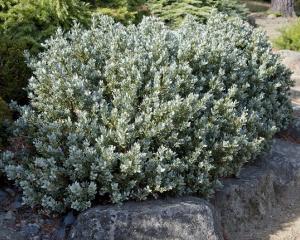
From mid-summer to early autumn, these small succulents put on a striking display of dense, flat-topped inflorescences. The long red tubular flowers almost appear to be glowing as they sit on top of 30cm to 60cm-tall green stems.
Commonly known as red crassula or sunglow plant, Crassula coccinea is native to the Western Cape of Southern Africa, where it is naturally found along rocky slopes.
Even when it is not in flower, the distinctive thick fleshy leaves of Crassula coccinea provide another level of interest. The overlapping triangular leaves are arranged in vertical rows along stems which branch out from the base. Crassula comes from the Latin word crassus to mean thick, while coccinea means to be coloured or dyed scarlet, which reflect the plant’s striking features well.
This plant makes a great addition to any rock garden or succulent collection. Being drought tolerant, this succulent is an easy garden plant if planted in an area with plenty of sunlight and well-draining soil. Lack of sunlight can result in a lack of bright flowers. Avoid over-watering, which can prove fatal to succulents.
After a few years, the stems can become leggy and scruffy, so it is best to regularly replace the plants. Propagation is easy with stem cuttings taken in spring.
Garden Life is produced by the Dunedin Botanic Garden. For further information contact Kyla Mathewson.









